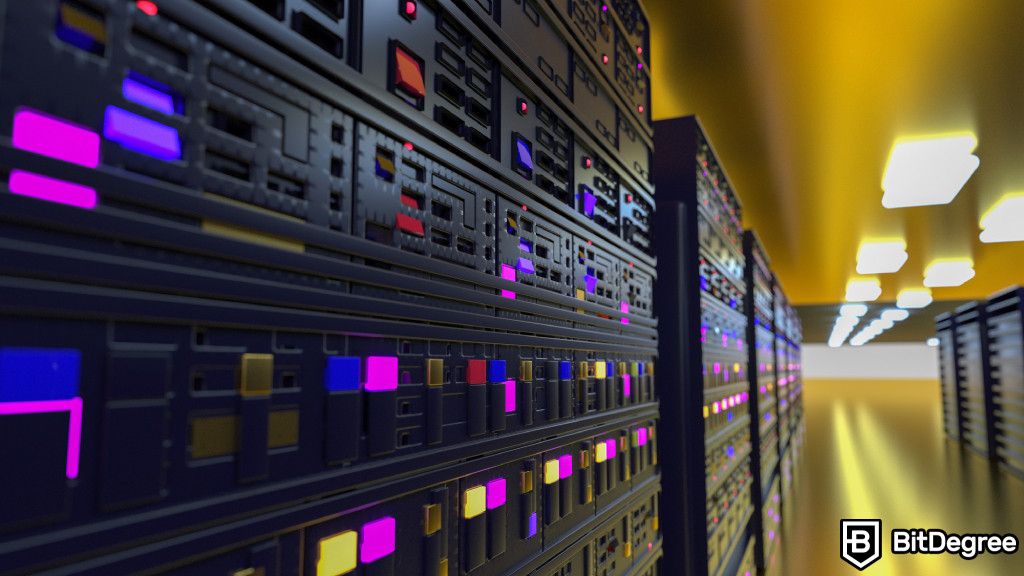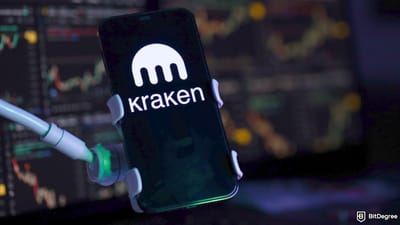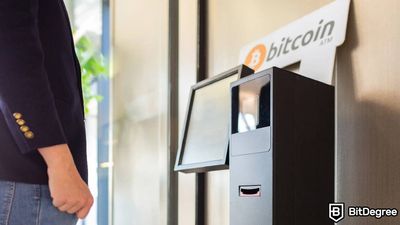Key Takeaways
- Filecoin (FIL), Helium (HNT), and Render Network (RENDER) are some of the best DePIN crypto projects that are shaping the future of decentralized infrastructure;
- These projects are changing the game, using decentralized networks to make industries more secure, scalable, and efficient;
- As the technology grows, DePIN crypto projects can become even more powerful, with advancements like AI making them faster and smarter. However, they'll need to overcome challenges like complexity and limited resource needs to reach their full potential.
Stop overpaying - start transferring money with Ogvio. Join the waitlist & grab early Rewards NOW! 🎁
DePIN crypto projects are changing the game by using blockchain to make systems like data storage and energy grids more secure, scalable, and efficient. By decentralizing control, these projects are enhancing infrastructure and creating new ways to invest in and manage critical resources.
Some emerging DePIN projects like Filecoin (FIL), a groundbreaking storage solution, have even been listed on top exchanges like Kraken, Bybit, and Binance, hinting at a potential for broader adoption. Exploring these initiatives will help you understand the growing importance of decentralized systems in our digital world.
Get ready to dive into how these projects are overcoming challenges and pushing forward a more scalable future. Let's look at the top 10 DePIN crypto projects that offer exciting futures for investors and tech enthusiasts alike.

Did you know?
Subscribe - We publish new crypto explainer videos every week!
What is Curve Finance in Crypto? (Animated Explanation)
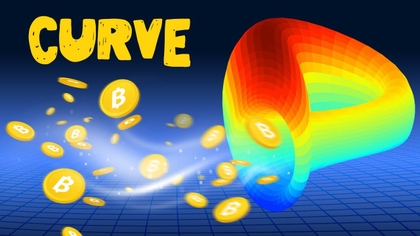

Table of Contents
- 1. What is a DePIN?
- 1.1. How Do DePIN Projects Work?
- 2. Top DePIN Crypto Projects in 2024
- 2.1. Helium
- 2.2. Filecoin
- 2.3. Render Network
- 2.4. Arweave
- 2.5. The Graph
- 2.6. Internet Computer
- 2.7. Bittensor
- 2.8. Storj
- 2.9. Artificial SuperIntelligence Alliance
- 2.10. DIMO
- 3. Benefits of DePIN Crypto Projects
- 4. Challenges of DePIN Technologies
- 4.1. Future Outlook for the DePIN Sector
- 5. Conclusions
What is a DePIN?
Before I get into the top DePIN projects, let's try to wrap our heads around the concept of what a DePIN is. Essentially, a Decentralized Physical Infrastructure Network (DePIN) uses blockchain to decentralize the control of physical systems like data storage and energy grids, solving traditional limitations[1]. By linking those decentralized systems, DePIN coin projects enhance security and scalability through control distribution, preventing any single point of failure.
Latest Deal Active Right Now:You may ask, how does decentralization make these systems stronger and more reliable, specifically? When the control is shared, the infrastructure becomes more resilient and fair, reducing the risk of issues caused by relying on one entity.
Moreover, blockchain technology sources the power behind these DePIN crypto coin projects, offering a secure, transparent framework to keep things running smoothly without central oversight. Blockchain allows the tokenization of physical assets, breaking them into smaller, tradable pieces.
Consequentially, tokenization opens new investment opportunities, letting people invest in things like real estate or renewable energy that were previously out of reach. Smart contracts on the blockchain manage these assets automatically, ensuring transactions are secure and agreements are honored.
Furthermore, integrating blockchain with physical infrastructure enhances accessibility and efficiency while simultaneously shifting the paradigm on how we manage and invest in these systems. This approach helps reshape management practices, opening up exciting new possibilities for the future.
As we dive deeper into the world of DePINs, it's crucial to understand how they operate at a technical level. By exploring how DePIN crypto projects work, you'll gain a clearer picture of the mechanisms driving this transformation and how they are setting the stage for a more decentralized future.
How Do DePIN Projects Work?
DePIN crypto projects use decentralized infrastructure to manage physical and digital resources efficiently. By spreading control across a network of contributors, these initiatives enhance resilience, security, and scalability, reducing dependency on centralized entities.
This decentralized approach allows seamless integration of physical assets, like data storage or energy grids, with blockchain technology, ensuring secure and scalable networks. Tokenization is crucial in these projects, where digital tokens incentivize participants to contribute their resources to the network.
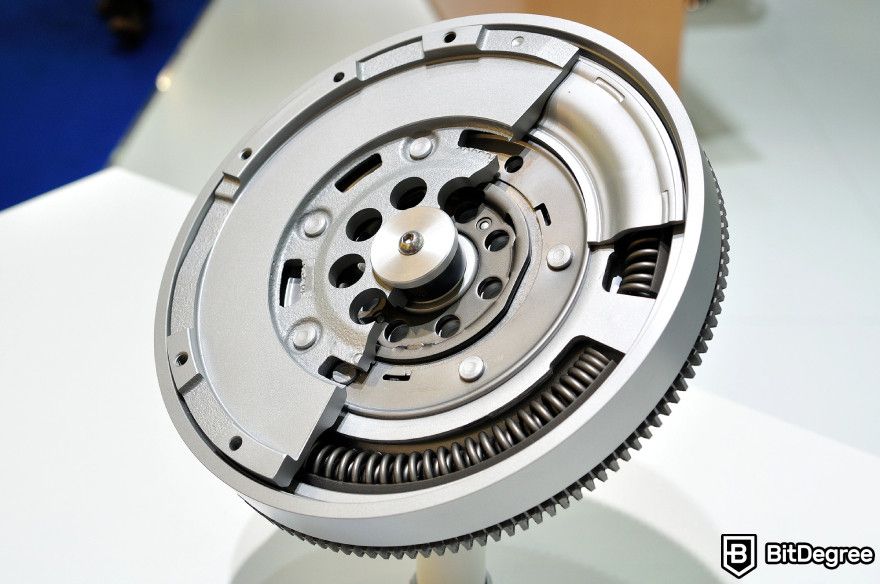
As more users engage with DePIN networks, the demand for these assets grows, driving their value and attracting additional contributors. This creates a self-reinforcing cycle known as the DePIN Flywheel, which fuels continuous growth and expansion.
A prime example of this model is Helium, a decentralized wireless network that uses blockchain to connect devices worldwide without relying on a traditional cellular infrastructure. Helium's success demonstrates how decentralized infrastructure can scale efficiently while maintaining security and reliability.
By integrating blockchain, smart contracts, and decentralized governance (such as DAOs), DePIN projects create a resilient and scalable ecosystem that drives innovation and attracts investment. This integrated approach ensures that the network remains robust, even as it expands, by leveraging community participation and decentralized decision-making.
Top DePIN Crypto Projects in 2024
DePIN crypto projects are shaking up decentralized infrastructure. Notable projects like Helium (HNT), Filecoin (FIL), Render Network (RENDER), and Arweave (AR) are leading the way. Let's explore what sets these top DePIN projects apart in this evolving landscape.
Helium
Token or coin: HNT.
Main use case: IoT connectivity.
Helium is a decentralized wireless network designed to connect Internet of Things (IoT) devices. As a key player in my DePIN crypto list, this network leverages the Solana blockchain technology to enhance IoT connectivity while rewarding participants through its unique token ecosystem.
As one of the DePINs on the Solana blockchain, Helium enhances scalability and transaction speed, which are crucial for managing the increasing demand for IoT connectivity. This robust infrastructure supports various applications, from smart city initiatives to agricultural monitoring, demonstrating Helium's network's versatility and practical utility.
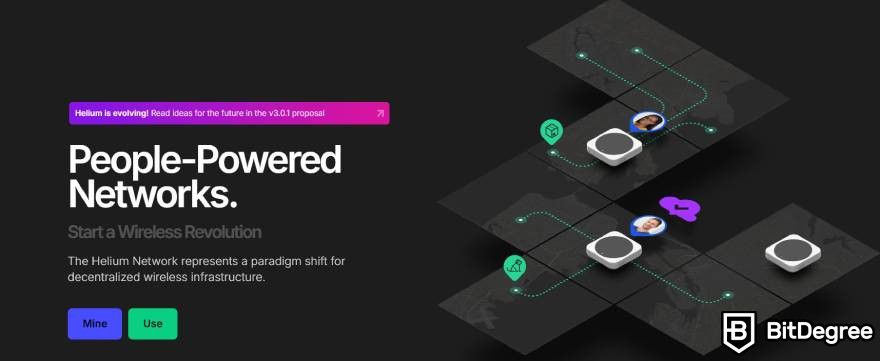
Using a Proof-of-Coverage (PoC) mechanism, the network incentivizes hotspot deployment, which expands coverage. In return, participants earn HNT tokens. One of the key DePIN coins of the Helium Network that drives growth.
HNT’s ecosystem, including IoT and MOBILE tokens, also supports IoT connectivity and mobile data transfer, ensuring adaptability to market demands.
Such a layered token ecosystem incentivizes participation and ensures adaptability to different technological needs. What's more, Helium's DePIN coin, HNT, is available to trade on Bybit and Kraken, further highlighting its role in the rapidly evolving market.
Filecoin
Token or coin: FIL
Main use case: Decentralized storage solution
Filecoin is a decentralized storage network implemented on top of the InterPlanetary File System (IPFS)[2], enabling users to rent out extra storage space and earn cryptocurrency in return.
This marketplace approach ensures data is securely stored in the native Filecoin blockchain and easily accessible. The network has grown significantly, now storing over 1.7 EiB of data with the support of more than 3,300 storage providers. To secure data, Filecoin uses Proof-of-Replication (PoRep) and Proof-of-Spacetime (PoSt). As a result, ensuring storage providers meet their commitments.
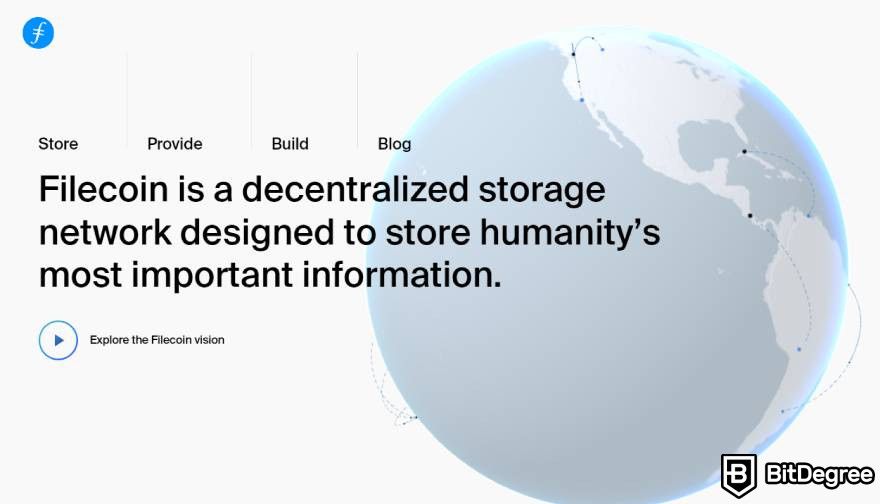
Furthermore, the recent launch of the Filecoin Virtual Machine (FVM), integrating the secure and scalable L2 smart contracts, expands the network’s capabilities, enabling decentralized applications (collateral lending, liquid staking, and more).
Filecoin also has a retrieval market where miners earn FIL, the network’s native DePIN crypto coin, for quick data access. The addition of Filecoin Plus improves deal distribution and ensures data retrievability.
As of writing, FIL is valued at $3 billion, further establishing its place in this DePIN crypto list, especially with its unique selling proposition (USP) as an innovative storage solution. If you're interested in purchasing this asset, it is available on Kraken, Bybit, and Binance.
Render Network
Token or coin: RENDER
Main use case: GPU rendering
The Render Network, which recently rebranded from RNDR to RENDER, opens up GPU rendering to more people by connecting users who need powerful computing with those who have extra capacity. As one of the largest distributed GPU networks globally, with over 100,000 node operators on its waitlist, the network makes demanding tasks like 3D graphics and AI computations easier and more affordable.
The RENDER token plays a key role in this ecosystem. As one of the prominent DePIN crypto coins, it incentivizes GPU providers to share their resources, creating a faster and more cost-effective way to complete rendering jobs. This system is especially helpful for smaller companies and independent creators who can't afford these resources.

As of writing, RENDER has a market cap of $3.2 billion and has experienced a 334.34% increase in token value over the past year, strengthening its place as one of the top DePIN crypto coins. The network's technology has even been integrated into Apple's latest iPad Pro, highlighting its growing influence in the tech industry.
Another recent breakthrough of the RENDER token is its swift transition from Ethereum to Solana. Followingly, centralized exchanges (CEX) like Bybit jumped in to get a piece of their shares, now available for token swapping.

Did you know?
Subscribe - We publish new crypto explainer videos every week!
What is an NFT? (Explained with Animations)


Arweave
Token or coin: AR
Main use case: Permanent data storage solution
Arweave (AR) is changing the way we store data by offering a permanent, decentralized solution. Instead of paying data storage subscriptions multiple times, users only pay once, thanks to the AR system that covers storage costs indefinitely. So, no more ongoing fees for you!
At the core of Arweave's technology is blockweave and a unique Proof-of-Access (PoA) mechanism, which ensures that once data is stored, it stays safe and easily accessible. The AR token plays a key role here—it's used to pay for the storage and keep the network secure.
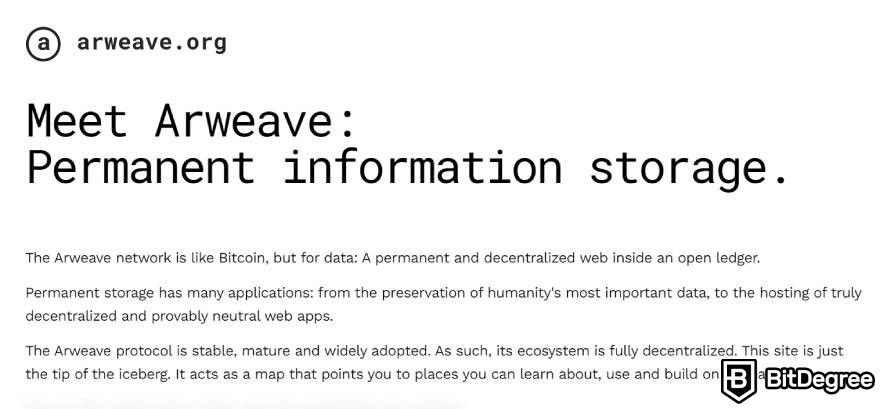
Arweave also powers the Permaweb, a decentralized web that stores information permanently and can be accessed through standard web browsers. Big projects like the Internet Archive use Arweave to protect important digital content, and its connections with other decentralized apps make it a major player in the Web3 space.
As more and more people see the value of permanent data storage, the AR token's worth might keep rising, strengthening the asset's position as a leader in decentralized storage. Supported by major investors like Andreessen Horowitz, with a funding model that ensures storage for over 200 years, Arweave is set to be a key part of the future of data storage.
Interested in tapping into Arweave? The AR token is available to trade on Binance and Bybit.
The Graph
Token or coin: GRT
Main use case: Blockchain data access
The Graph (GRT) is a must-have tool for developers working with blockchain data. It makes accessing data easier by creating custom indexes called Subgraphs, which organize and share information across different blockchains. These Subgraphs can connect the data from Web2 and Web3, making it available for decentralized applications.
As a standout in this DePIN crypto list, The Graph gathers, stores, and ensures data availability without relying on costly centralized services like AWS. The GRT token, with a supply of over 10 billion, is crucial in this system. It covers data query costs, rewards contributors, maintains data security, and makes accessing information easier.

Founded by Yaniv Tal, Brandon Ramirez, and Jannis Pohlmann, The Graph quickly gained support, raising $69.6 million from top investors. Tal and Ramirez, who previously worked at MuleSoft, brought their expertise to make The Graph a key player in the decentralized web.
As the project grows, the GRT token continues to catch the attention of top-tier exchanges. For instance, it is listed on Binance, Kraken, and Bybit as one of the DePIN crypto coins to buy, sell, or trade.
Internet Computer
Token or coin: ICP
Main use case: Decentralized network
Internet Computer (ICP) takes a unique approach to the internet by offering a fully decentralized network, making it a one-of-a-kind project on this DePIN crypto list. Unlike traditional IT setups, ICP provides a new environment for hosting apps, services, and digital assets within a decentralized framework.
A key feature is the Network Nervous System (NNS), which guides the network's progress. Holders of ICP tokens have a say in the platform’s direction and can vote on updates and changes. These tokens also power the network, rewarding participants who contribute to its operation. In the past year, the ICP token surged by over 107%, reaching a market cap of $6.1 billion by April 2024.
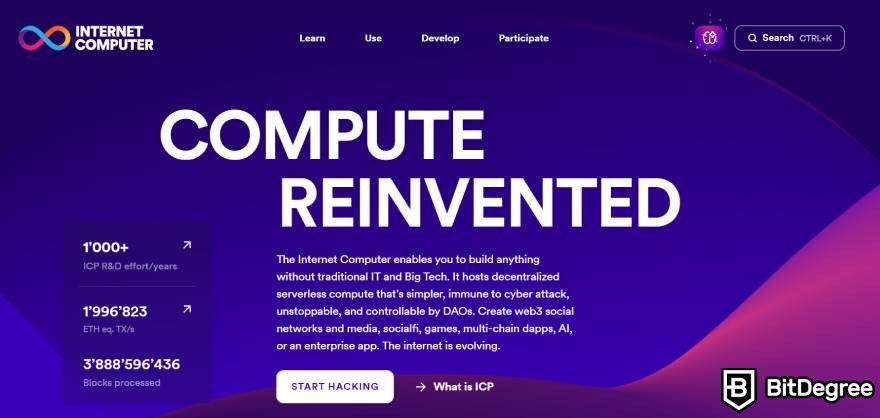
Recent improvements, like expanding memory capacity to over 100GiBs and adding real-time updates with Websockets, have strengthened ICP’s ability to support complex applications. These developments, along with the platform’s innovative Threshold Relay consensus mechanism and enhanced developer tools, establish ICP as a significant force in the decentralized internet.
The fast-paced growth of ICP has resulted in its listing on well-established exchanges, such as Binance, Kraken, and Bybit, where you can hold or trade the token.
Bittensor
Token or coin: TAO
Main use case: Artificial Intelligence (AI)
When AI-driven innovation meets decentralization, that's Bittensor, the platform built on an expansive AI model ecosystem. This unique environment fosters collaboration among diverse AI engineers and enthusiasts, empowering more participants to engage and reap the benefits.
Instead of a monolithic structure, Bittensor uses specialized subnets, each tailored for tasks like AI computation and data management. These subnets operate as dynamic marketplaces, rewarding contributors in TAO tokens based on their input and the value they bring to the network.

The Decentralized Mixture-of-Experts (MoE) model is a standout feature, which brings together various neural networks to enhance prediction accuracy and tackle complex data challenges.
In the meantime, Bittensor continues to forge strategic partnerships, capitalizing on the current momentum of rapid AI adoption. Exchanges like Binance, Kraken, and Bybit are among those riding the wave, where you'll find TAO listed as a DePIN crypto coin for trading.
Storj
Token or coin: STORJ
Main use case: Cloud storage
Storj (STORJ) revolutionizes cloud storage by offering a decentralized solution focused on security, privacy, and accessibility. Unlike traditional providers, Storj encrypts and distributes data across a global network of independent nodes, ensuring no single point of failure and enhancing resilience against data breaches.
Storj's sharding process breaks data into encrypted fragments stored across multiple nodes, ensuring continuous access even if part of the network fails. With the launch of Storj Next, the platform enhanced its competitive edge against traditional services like Amazon S3, adding new features and incentives that boost both capacity and reliability.
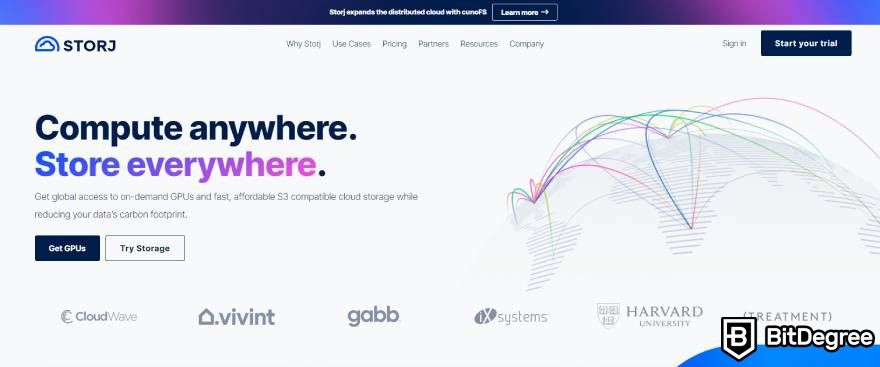
What's more special, the project is environmentally friendly, utilizing existing resources to minimize its carbon footprint. Storj also supports the IPFS Pinning Service, extending its capabilities for dApps and NFTs, which is crucial for its role in the Web3 ecosystem.
The STORJ token is central to this DePIN project, facilitating transactions and rewarding node operators. With its current market capitalization of $207 million and a 49% price increase over the past year, Storj's low entry barrier and strong privacy features make it a compelling choice for personal and enterprise storage needs.
On top of that, STORJ is available to purchase on Binance, Bybit, and Kraken. These integrations suggest that STORJ is on its way to massive adoption.
Artificial SuperIntelligence Alliance
Token or coin: ASI
Main use case: Artificial Intelligence (AI)
An exciting development is unfolding in the world of top DePIN crypto projects. Imagine three groundbreaking forces, Fetch.ai, Singularity.NET, and the OCEAN Protocol, becoming one—bringing us the brand-new Superintelligence Alliance.
Following its three inspiring predecessors, the Artificial Superintelligence Alliance is an open-source AI research and development platform with aspirations to lead the industry toward independence.

The tokens from these three organizations have now merged into ASI, a multi-functional utility token. This innovative move aims to advance the development of decentralized AI on the blockchain while prioritizing ethical and trustworthy practices.
Since the ASI token merge announcement was pretty recent (specifically, May 2024), it remains pretty unclear which exchanges will support this DePIN crypto coin. Seeing that esteemed AI experts are taking the wheel, namely Dr. Ben Goertzel, Humayun Sheikh, Bruce Pon, Dr. Trent McConaghy, and Janet Adams, it looks like the project is moving on the right track.
DIMO
Token or coin: DIMO
Main use case: Vehicle data management
DIMO is revolutionizing vehicle data management, shifting control from manufacturers to drivers. Instead of car companies holding all the information, this platform allows owners to track their vehicle's performance and securely share data within a decentralized network. DIMO turns everyday data into a valuable asset that benefits users.

With DIMO's user-owned IoT infrastructure, the information is shared and monetized securely, offering transparency and financial rewards. Partnerships with companies like NATIX boost the data's value, impacting important areas like maintenance and insurance while making DIMO a powerful financial tool for drivers.
As a result, DIMO's fresh approach is quickly catching on, with $9 million in funding and growing interest from the auto industry. This immense support and the rising value of the DIMO token, as seen on supporting exchanges like Bybit, drive us to the era of innovative mobility solutions.
Benefits of DePIN Crypto Projects
DePIN crypto projects bring a lot to the table by using decentralized infrastructure. By cutting out the middlemen and central authorities, these projects make systems more transparent, secure, and accountable.
Moreover, the blend of blockchain technology and DeFi applications boosts the usefulness of DePIN projects. This combo helps create a flexible, scalable system that supports new and established markets.
Another strength of top DePIN projects lies in their utility. They do not just open the doors to crypto trading but also big data access, greater GPU resources, AI development, and uniquely, vehicle data management—among others, depending on the DePIN project you end up partaking in.

Plus, the strong community backing these projects drives innovation and keeps the ecosystem robust. When most crypto communities are active on Reddit or X, DePIN communities are quite unique, as exemplified by the GitHub community powering Filecoin.
Due to the innovative nature of DePIN crypto projects, experts from all walks of life, from developers to data scientists, are increasingly drawn to them. The role of DAO in DePIN holds the key here, where participants who contribute resources to strengthening the blockchain will be rewarded higher governance rights through DePIN crypto coin rewards.
Aside from fostering a strong collaboration in the community, DePIN projects are also miles ahead with their partnerships. They can be traded on both CEXs and dApps, bridging the path between CeFi and DeFi. Investors are flocking to DePIN projects, especially when a certain technology (like AI) is on the boom. From the evidence laid out here, it's clear that DePIN crypto projects are set to lead the next wave of digital innovation.
Challenges of DePIN Technologies
So far, I've listed out the best DePIN crypto projects and how they're highly innovative. That said, it is crucial to address the challenges these technologies face. While DePIN projects bring a lot of excitement and innovation, they also come with significant hurdles that must be tackled.
One of the biggest challenges is scaling up. As these networks grow, managing more transactions and real-time data becomes more demanding. For example, IoT applications need rapid processing, which can push even the fastest blockchains used in DePINs, like Solana, to their limits. In the long run, resource overload can cause stability issues.
Another hurdle is making sure DePIN networks can smoothly connect with other systems, a concept known as interoperability. When these networks struggle to integrate well with existing systems, it can lead to delays and inefficiencies. The lack of a central authority to quickly address problems makes resolving these issues even tougher.
Finally, there's the challenge of navigating regulatory concerns. DePIN technologies offer great privacy benefits, but this also draws attention from regulators, especially in sectors with strict rules like telecommunications. This scrutiny could result in tighter regulations, which might slow down the growth and adoption of these innovative projects.

- Secure and reliable
- Accepts fiat currencies
- Lots of trading options
- Reputable exchange
- Accepts fiat currencies
- Offers various trading options

- Huge trading variety
- Regulation-compliant around the globe
- Fair trading fees
- Beginner-friendly
- A wide array of features
- Vast number of different crypto coins & tokens

- Beginner-friendly
- Secure
- Decent trading and withdrawal fees
- Crypto.com Visa Card
- Automated tools & bots
- Ecosystem synergy with CRO
Future Outlook for the DePIN Sector
DePIN crypto projects have the potential to experience growth as technology advances and interest increases. These projects may reshape industries that benefit from decentralized services, potentially leading to wider adoption.
Emerging trends, like AI integration and GPU-powered platforms, could make some of the best DePIN crypto projects more scalable and efficient. Combining computing and storage resources might improve data management, adding value to these networks. However, these advancements come with challenges, such as technical complexities and resource demands.
Investments will likely play a key role in driving top DePIN projects forward. Investors may focus on projects with strong communities, innovative technologies, and clear applications. As the sector evolves, success will likely hinge on how well projects address challenges like scalability and regulation while continuing to innovate.
Conclusions
To sum up, the top DePIN projects we've discussed, like Filecoin's decentralized storage and Helium's community-powered IoT networks, are all paving the way for a new era in decentralized infrastructure. Each makes a unique mark by transforming how we manage data, energy, and connectivity, proving that decentralized networks can bring real change.
As these projects grow, the potential for innovation in the crypto world is huge. While they face challenges like scalability and regulations, the benefits—like better security, efficiency, and community control—far outweigh the obstacles. These projects are not just surviving; they're set to thrive as blockchain gets more people on board, which has been proven by DePIN coin listings on Bybit, Binance, Kraken, and other pioneering platforms.
In this fast-evolving space, it's crucial to stay updated. DePIN projects are at the forefront of reshaping industries, and their impact will only grow stronger. Keep watching this space and the latest crypto news—these projects are key players in the future of decentralized networks.
The content published on this website is not aimed to give any kind of financial, investment, trading, or any other form of advice. BitDegree.org does not endorse or suggest you to buy, sell or hold any kind of cryptocurrency. Before making financial investment decisions, do consult your financial advisor.
Scientific References
1. Z. Lin, T. Wang, L. Shi, et al.: ‘Decentralized Physical Infrastructure Network (DePIN): Challenges and Opportunities’;
2. B. Guidi, A. Michienzi, L. Ricci: ‘Evaluating the Decentralisation of Filecoin’.
